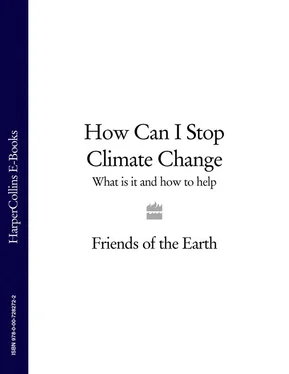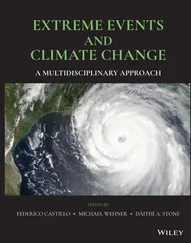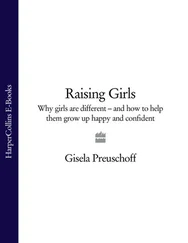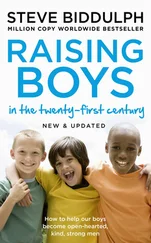Many people’s lives are already being altered by climate change. Some are adapting, but others face real hardship.
Let’s look at some of the specific ways that climate change is affecting our planet.
Four people died and thousands had to evacuate their homes when torrential rain hit England in June 2007, causing flash floods, chaos to travel and billions of pounds worth of damage. A month later the heavy rains returned, leaving a swathe of central England under water. The Severn and Avon rivers flooded thousands of homes; the Thames burst its banks in Oxford and flowed into nearby villages. Roads were closed and train services failed. Between May and July twice as much rain as normal fell, breaking records going back to 1766.
Although unusual, the summer floods of 2007 were not entirely without precedent. Back in 1920 the River Lud in Lincolnshire burst its banks, washing away bridges, houses and cars in the small market town of Louth; 23 people died. Homes and businesses in Louth were under water again in 2007.
Tewkesbury in Gloucestershire got a taste of a future with climate change in the summer of 2007 – among the wettest ever for many communities across Britain.
It’s impossible to pin the blame for one weather event on climate change. But scientists say our changing climate is making such extremes more likely.
Yet the UK experience to date has been relatively mild. In August 2002 floods swept central Europe: Germany had a record-breaking 35 cm of rain in 24 hours and in Dresden, water levels of the River Elbe reached their highest since records began in 1275. In 2005 more than 65 cm of rain fell in Mumbai, India, in 24 hours – the country’s heaviest ever recorded rainfall. In China torrential summer rains in 2007 affected an estimated 100 million people and hundreds died in flash flooding and landslides. In South Asia millions fled their homes and thousands died after heavy monsoon rain caused flooding in parts of Northern India, Nepal and Bangladesh. In Assam 90 cm of rain fell in 20 days, flooding farmland.
hurricanes, cyclones and monsoons
Hurricanes over the Atlantic during the summer are nothing new. But the 2005 season made many people think about climate change again. Hurricane Katrina, which tore through New Orleans in August that year, was not the most powerful of the storms, but it did the most damage. Nearly 2,000 people died and many thousands lost their homes – and this in the world’s richest country.
More recently hundreds died in Pakistan, Afghanistan and India in 2007 when Cyclone Yemyin hit the region. The disaster was made worse by heavy monsoon rains bringing severe flooding.
melting glaciers and ice sheets
Rising temperatures are damaging the major ice sheets at the Poles. In Greenland, which is warming faster than other parts of the world, vast glacial rivers are cutting through the ice. In the summer of 2007 sea ice shrank to a record low, with an area twice the size of Britain disappearing in the space of a week. Scientists predict that by 2030 the Arctic could be ice-free in the summer.
Generations of Inuit in the Arctic Circle have depended on hunting and fishing to feed their families, but changes in the sea ice make navigation difficult and hunting on thin ice perilous. Experienced hunters have died where the ice has given way.
Argentina’s Perito Moreno Glacier is one of the few that are not retreating because of global warming. But for how much longer?
Aqqaluk Lynge, President of the Inuit Circumpolar Council, Greenland, says, ‘Climate change in the Arctic is not just an environmental issue with unwelcome economic consequences. It is a matter of livelihood, food, and individual and cultural survival. The Arctic is not wilderness or a frontier, it is our home and homeland.’
Further south, in the semi-frozen areas of Alaska and Siberia, thawing of the once-permanently frozen ground is turning solid foundations for buildings and roads into soft bog. Houses are sinking as the land subsides.
Warmer weather is also causing problems for Europe’s snowy regions and the people who live and work there. Alpine glaciers are in retreat and snow is arriving later and melting earlier in the year. Alpine glaciers shrank by 10 per cent in 2003 alone. Germany’s last glacier, the Zugspitze, which provides drinking water for the Rhine Valley, is melting so rapidly that people in the area have tried to protect it from the sun by covering it with canvas.
Fernand Pareau has been an Alpine mountain guide in Chamonix, France, for more than 50 years. Aged 81 in 2007, he has witnessed huge changes, including more tourists and more traffic in the mountains.
He says the natural environment has altered, with a shift in the seasons, and changes in snowfall. Whereas there were once four distinct seasons, now winter comes late and summer comes sooner. Birds like magpies – previously not seen at such altitudes – are now common.
‘It’s not beautiful anymore, because when you’re in Chamonix, you look at the Bosson Glacier… it’s black, so it’s not beautiful. You see the waterfalls there but it’s not white anymore, it’s ugly,’ says Fernand. ‘I think that for the future, if global warming continues like this, people will come to the mountains much less.’
It’s common to talk about glaciers ‘retreating’. They are of course melting, and have been doing so for a long time. But the rapid speed of melting today is causing problems.
In 1985 Norbu Sherpa’s family home, his fields and animals in the Nepalese Himalaya were swept away by an outburst from the Dig Tsho glacial lake. He had been training to be a monk but after the family lost everything, he gave up his religious calling to work as a trekking guide. Today he and his family are still rebuilding their lives. ‘Those were the most distressing hours of my life,’ Norbu glacial lakes. In the Everest region glaciers Sherpa says.
There are more than 3,000 glaciers in the Nepalese Himalaya, most feeding into retreated by up to 60 m between 1970 and 1989. As the glaciers retreat, water levels in the lakes rise. A study for the United Nations Environment Programme warned that more than 20 lakes in the Himalayas are potentially dangerous because of climate change – at risk of bursting their banks.
The retreat of Himalayan glaciers also poses a threat to the millions of people in India and across Asia who rely on snow and glacial melt for their water; scientists think that in 20-30 years these supplies will be greatly reduced.
LEAVING HOME TO THE WAVES:
‘When I was a small boy this island was big. As I grew older the island got smaller As you can see the island has broken and it’s now in two pieces. The sea is eating the island away.’ Jacob Tsomi, chief of the Dog clan, Carteret Islands
The Carteret Islands – a small horseshoe of atolls in the Pacific Ocean – form part of Papua New Guinea. Their once-fertile vegetable gardens are now all poisoned by salt. Lying less than 1.5 metres above sea level, the islands are frequently flooded by tidal surges. Bernard Tunim, who lives on Piul Island, describes the effects of a tidal surge: ‘We planted banana, taro, even tapioca, cassava and other fruit trees. But just last month we had these high tides and it swept the whole area. We had waves coming from three sides, and so this place was flooded with sea water. All that we had from banana to taro and cassava just dried up. But we don't want to move because we know that this is our own land.’
Читать дальше












